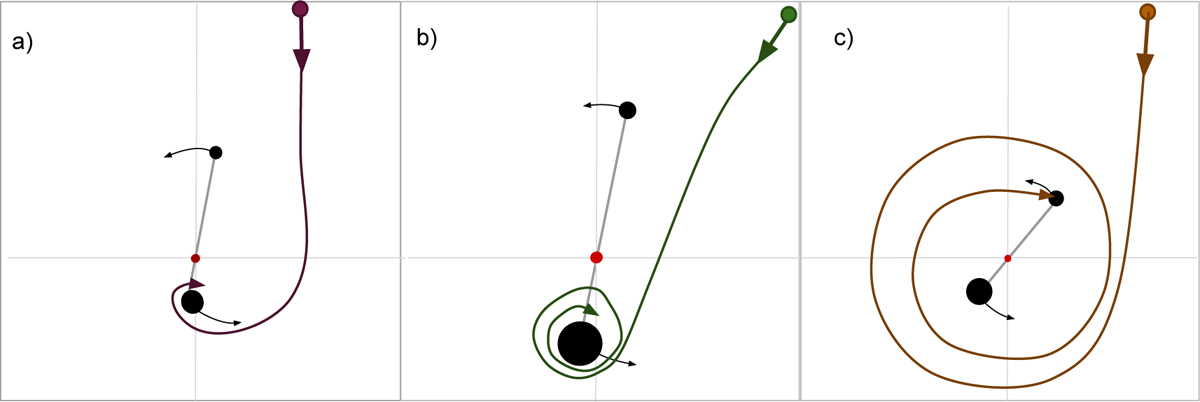Fig. 7

Download original image
Sketch of three distinctive cases that characterise the accretion efficiency of the binary components. The red dot indicates the binary barycenter, the small and large black dots the secondary and primary, respectively, and circular velocities shown by the black arrows (illustrative, and not shown to scale). Case a: pebble Stokes number τs is low and strongly coupled to the gas. It impacts the primary after typically a single encounter and renders the probability low that it will impact the secondary. Case b: orbital separation, ab, is too wide for the secondary to benefit from accretion on the massive one. Case c: narrow binary separation combined with the pebble accretion regime in which pebble spirals are ample and dominant. The probability of impact on the secondary is high due to the repeating encounters before the pebble sinks toward the massive body.
Current usage metrics show cumulative count of Article Views (full-text article views including HTML views, PDF and ePub downloads, according to the available data) and Abstracts Views on Vision4Press platform.
Data correspond to usage on the plateform after 2015. The current usage metrics is available 48-96 hours after online publication and is updated daily on week days.
Initial download of the metrics may take a while.


